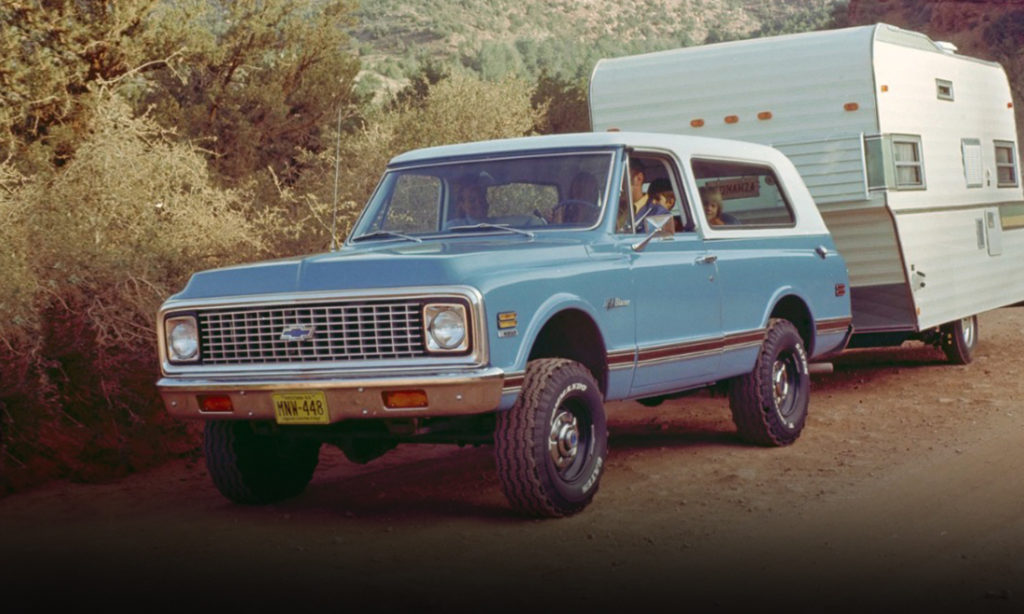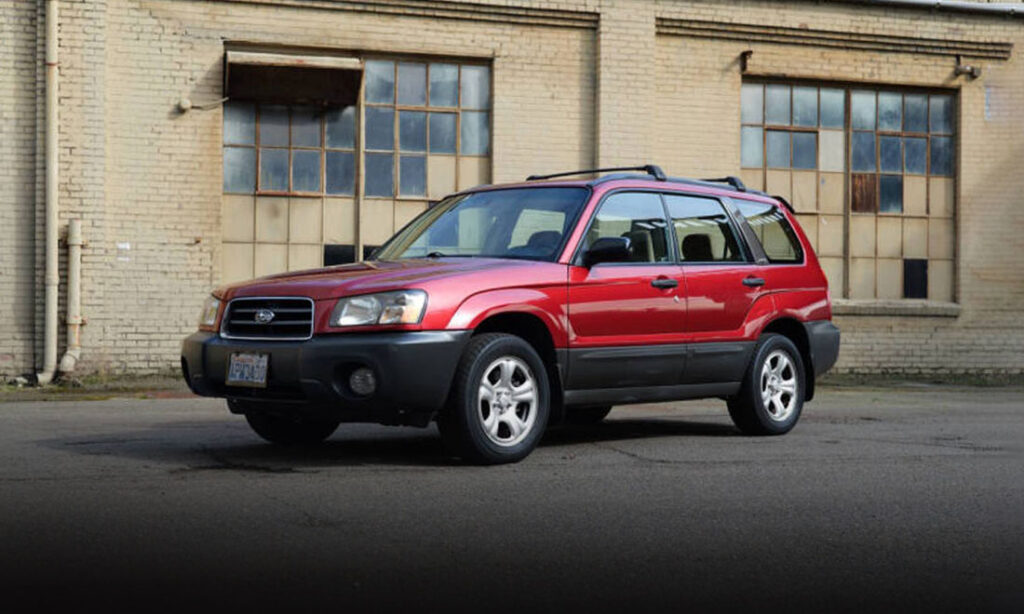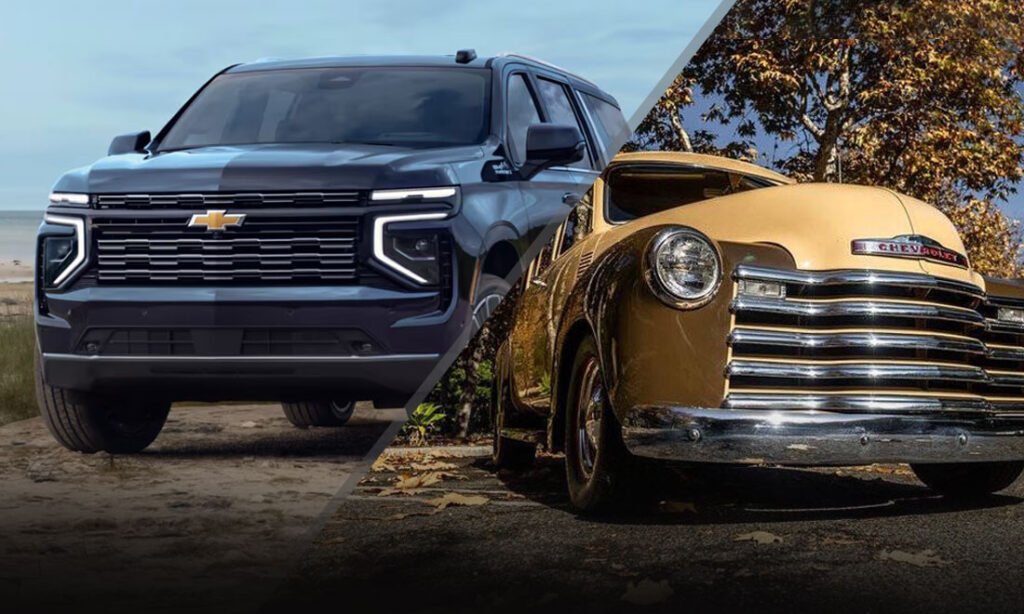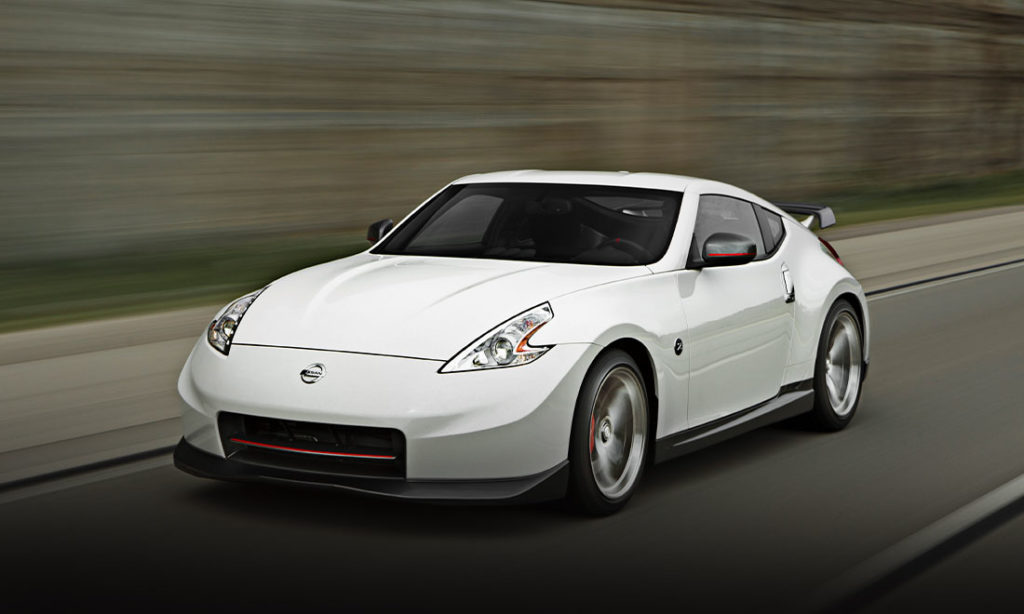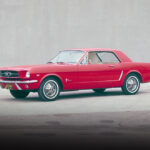Ford Sedans Through the Years
Whether it’s the Model T, the Escort, or the Taurus, we’re showing appreciation and looking at the numerous Ford sedans through the years.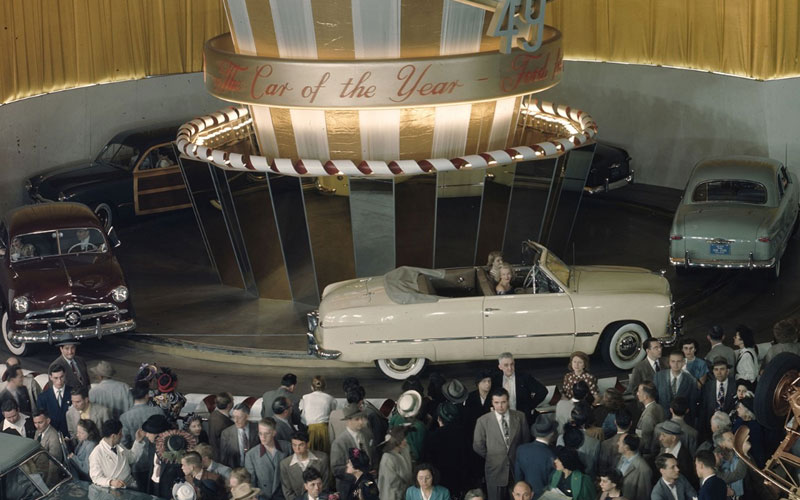
100+ Years of Ford Sedans
For more than 100 years with 50+ nameplates across over a dozen different generations, Ford has sold an incredible 60 million sedans! Of all the American automakers, Ford has the longest running presence in the full-size sedan market. However, in 2020, after the Ford Fusion wrapped up production, the blue oval brand moved on without the sedan.
Instead, Ford’s complete focus is now on trucks, SUVs, coupes, and commercial vehicles. There’s a rich history to explore, though. That’s what we’re going to do today. Now, can we cram 100 years of Ford sedan history into one blog article? Probably not, but we’re going to take a look at some of the highs and lows of several Ford Sedans through the years.
Ford Model T 1908-1927
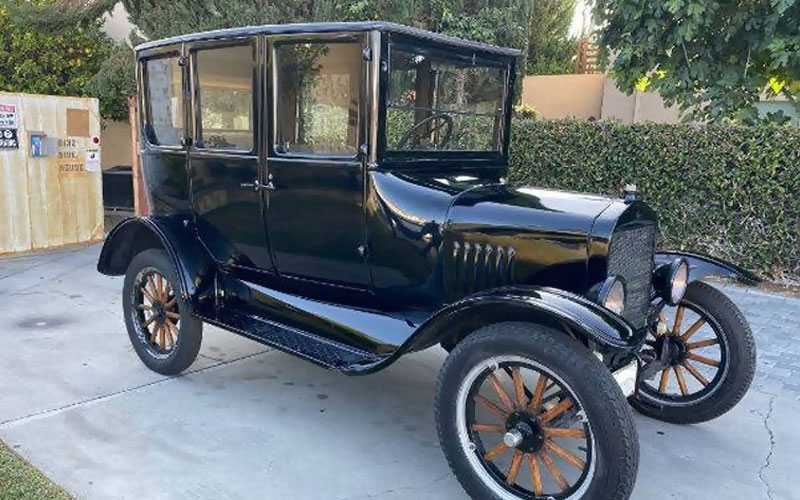
- The first Ford sedan was also the first hugely successful Ford vehicle: the Model T. While the Model T was first produced in 1908, the first sedan version of the Model T came in 1919.
- The combination of an inline-four 177 cubic-inch engine and two-speed manual transmission produced 20 horsepower (hp) at 1600 revolutions per minute.
- The 1919 Model T sedan was the first with electric starters and demountable tire rims.
- Despite the obvious success of the Model T, there were some issues with the production process. With a focus on making the car inexpensive as possible, the assembly line became a dangerous place to be for overworked employees. In addition to that, the Model T needed updates to keep up with road development and changing consumer preferences.
- As Ford developed its next vehicle, the Model A, they put some of those issues to rest.
Ford Model A 1927-1931

- Picking up where the Ford Model T left off, the Model A was a two-door Tudor sedan, a first for Ford. The Model T had been going strong for 18 years at that point, but the Model A brought a variety of styles with it, including coupes, convertibles, town cars, and sedans.
- The Model A was the first Ford to use a standard set of driver controls including the gearshift, throttle, brake pedals, and clutch.
- An inline-four engine and three-speed sliding-mesh manual transmission drove the Model A forward with 40 hp.
- By 1930, Ford hit the three million mark in Model A sales. While the Model A was successful, Ford had an eye on the future, soon introducing the Model B.
- When Ford quit production of the Model A in March 1932, 4.8 million vehicles were sold across all nine body styles.
Ford Model B 1932-1934
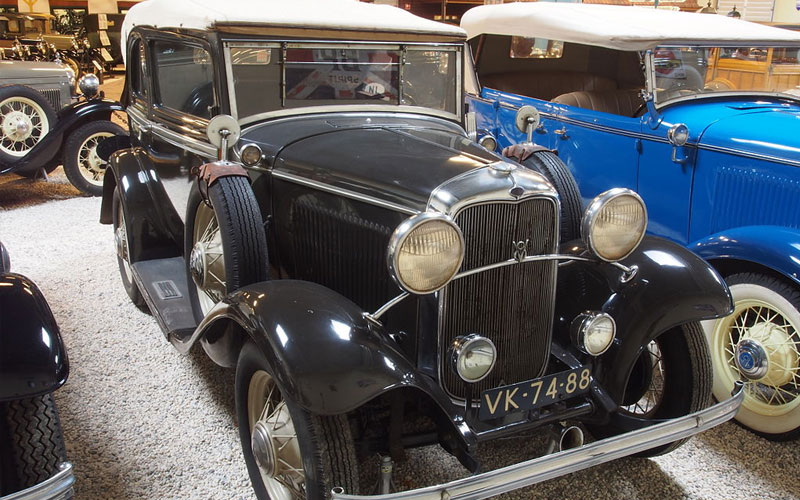
- Instead of just updating the Model A, Ford introduced a completely new model. Well, three of them, actually. There was the Model B, the Model 18, and the Model 46. All three of them were referred to as the 1932 Ford.
- The three vehicles had different inner workings, the Model B with an updated four-cylinder engine and the Model 18 and Model 40 with a flathead V8. That V8 generated 65 hp. The Model 18 was the first mass-produced car that featured a V8 at an affordable price.
- Perhaps it wasn’t really a fair fight because the Model B had a few technical issues and customers had the option to get a vehicle with the V8. That’s exactly what they did.
- With buyers choosing the V8 over the four-cylinder models, the Model B was discontinued in America, though it continued on for a short while longer in Europe.
- It was around the same time that the Mercury brand was announced. The new brand under the Ford Motor Company umbrella was placed between Lincoln and Ford models.
- Ford continued introducing various sedans (including the Model 48, the 1937 Ford, and the 1941 Ford) before shifting production to help with the U.S. and its efforts in World War II.
- At a few different points throughout the 1940s, Chrysler edged out Ford as the top U.S. automaker, but that was about to change at the turn of the decade.
Ford Sedan 1949-1951
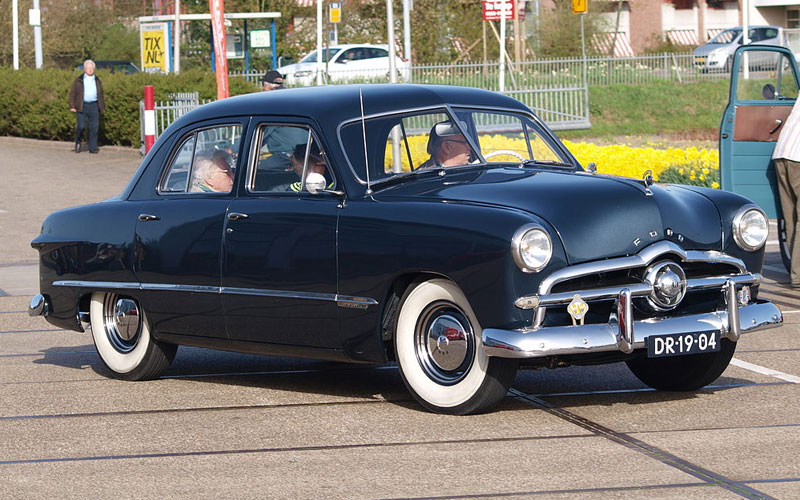
- The first new American car design to come from Ford, and all of the Detroit automakers, after World War II was the 1949 Ford.
- After the Ford F-Series pickup trucks were introduced, the Ford line became exclusively for cars. The new look featured an aerodynamic profile, integrated pontoon fenders, and a spinner grille that was inspired by airplanes.
- Despite the exterior updates, the 1949 kept the same inline-6 or V8 engines from the previous generation, each of which was noted in text on the grille.
- Also displayed were the Standard or Custom trim names.
- After losing its standing with some customers in the 1940s, Ford reclaimed first place in top-selling American manufacturers in 1949, selling over a million overall Ford vehicles that year. The 1949 was part of the reason Ford reclaimed that spot.
- The 1949 underwent a few changes by the 1951 model year. It was given a dual-bullet grille, the “Victoria” name was placed on two-door hardtop versions, and the three-speed Ford-O-Matic was introduced as the first automatic transmission on a Ford-branded vehicle.
- Despite the success of the line that started in 1949, Ford refreshed their lineup again in 1952.
Country Sedan 1952 – 1974
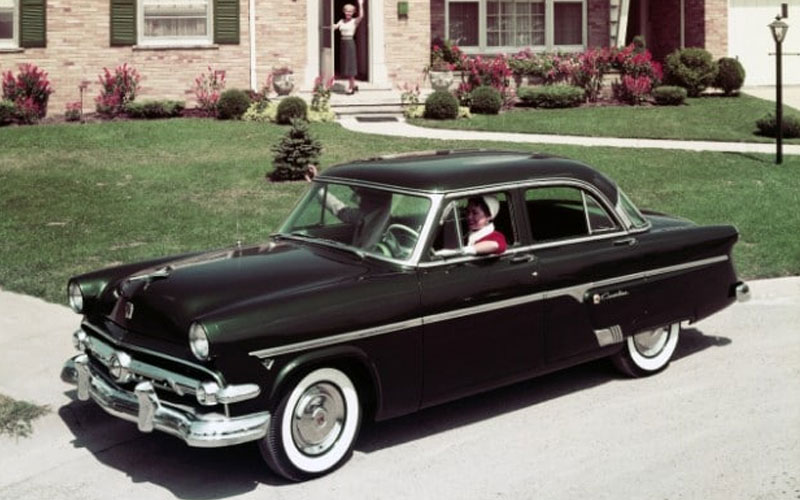
- The 1952 Ford refresh was just that: a refresh. There weren’t a lot of changes, but some of the noticeable updates included a curved windshield that was made of one piece large piece of glass. A new straight-six engine produced 101 hp and so did a 3.5-liter overhead valve engine. The 3.9-liter Flathead V8, topping out at 110 hp, was carried over.
- Mainline, Customline, and Crestline trim levels were introduced with the ‘52 models. Body styles ranged from two-and-four-door sedans to station wagons, coupes, convertibles, and hardtops, or the “Victoria” hardtop to be more specific.
- Ford designers continued making their vehicles more useable, too. For example, the 1952 Ford was given new trunk hinges so that they were less likely to damage the luggage being stored there.
- To mark the 50th anniversary of the Ford brand, 1953 models were given power-assisted brakes and steering. While those features were already available on the Mercury and Lincoln lines, this was the first Ford vehicle to have them.
- Ford continued with additional models, including the 1955 Ford. In addition to evolving their sedans (and other body styles), Ford continued expanding. In 1956, Ford bought a large piece of land near Melbourne, Australia and eventually built a factory and Australia Ford headquarters there.
- In 1956, after years of private ownership, Ford became a publicly traded corporation.
Ford Fairlane 1955-1970

- Ford brought out the Fairlane as a 1955 model and as the flagship of the full-size range for the company. The ‘55 Fairlane replaced the Crestline in this way. Like many other Ford vehicles, the Fairlane was available in a variety of body styles: a station wagon, convertible, hardtop, and, of course, as a sedan.
- Some of the trims included a Crown Victoria (a name you’ll see later) Skyliner, but the most popular Ford sedan that year was the Fairlane four-door Town Sedan. With a selling price of $1,960, Ford sold 254,000 1955 Fairlane sedans the first year it was available.
- The ‘55 model had a 3.7-liter straight-six engine or a 4.5-liter V8, but the 1956 models upgraded with two new (and more powerful) V8s, including a 4.8-liter engine good for 202 hp and a 5.1-liter good for225 hp.
- Although the Fairlane was only available for 15 years, it has seven generations to its name. Every few years, Ford was debuting a new generation of the vehicle. The second generation, for example, kicked off with the 1957 model.
- A wider, longer, lower, and also sleeker ‘57 Fairlane was such a hit with customers that Ford outsold Chevrolet. Then came another facelift with the 1958 Fairlane. This one, with quad headlights, a ‘58 Thunderbird-style grille, and other new styling elements, was more divisive. To this day, there’s a debate about whether the 1958 Ford styling (on all models) was a good idea or not.
- For the third generation, the 1960 Fairlane was restyled again. Guess what? The 1961 Fairlane was restyled, too. As the Galaxie continued in the top full-sized Ford spot, the Fairlane became a base model.
- Ford continued restructuring the Fairlane as it moved the ‘62 model into the intermediate position for the start of the fourth generation. It also became a unibody car, like the Falcon.
- Engine options varied between one of two six-cylinder engines or one of four V8s. The transmission options were just as varied with a Ford-O-Matic two-speed, a three-speed manual, a Cruise-O-Matic three-speed, or a four-speed manual all available.
- Another refresh on the fifth-generation 1962 Fairlane gave it a look that matched the full-sized Galaxie.
- Horizontal headlights, a four-inch increase in length, and a new Torino trim were all part of the sixth-generation refresh.
- The last refresh was a seventh-generation 1970 Ford Fairlane. Styling was more aerodynamic and rounder than ever.
- Despite Ford discontinuing the Fairlane, it was a sales, engineering, and performance success story throughout its 15-year run. Meanwhile, the Fairlane name continued on as an Australian model after being introduced there in 1959. The last Ford Fairlane in Australia was produced in December 2007 after five generations of sales.
Ford Galaxie 1959-1983
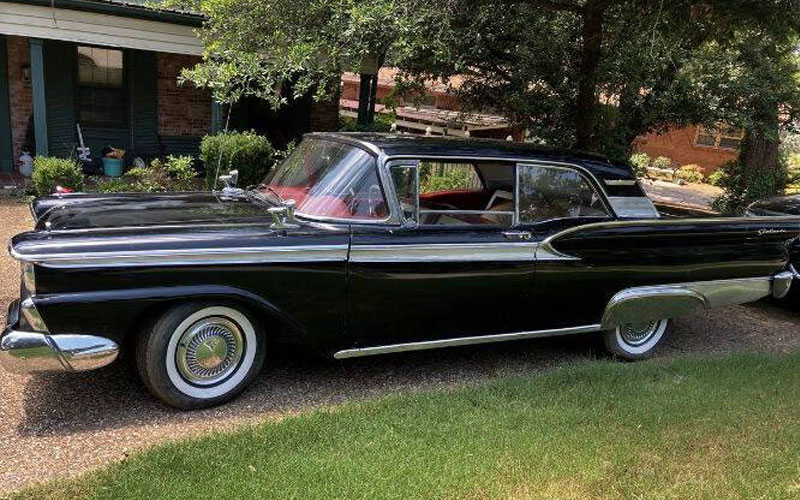
- Just as the Ford Fairlane replaced the Crestline, the 1959 Ford Galaxie replaced the Fairlane as the premier full-sized Ford model. Initially based on the Fairlane 500 and linked to the Thunderbird, the Galaxie became the Ford’s top nameplate for second-generation 1960 models.
- A lot of chrome and stainless steel helped the Galaxie fit in with the futuristic, space-age themes at the time. Ford even incorporated star emblems on models through 1962. Sales then peaked at 648,010 cars in 1963.
- By the mid-1960s, styles were changing, at least enough to include vertically stacked headlights. Things were changing under the hood, too. The third-generation 1965 Galaxie replaced a straight six with a new 3.9-liter six-cylinder engine. The suspension upgrade also resulted in better handling and a better overall ride.
- As with many of the cars you’ll read about here, the Galaxie grew less boxy as time went on. That was the case with the Galaxie models of the fourth generations of the car.
- Of course, many new elements were added as the car evolved, too. Headrests, hideaway headlights, a cigarette lighter, and padded front back seats were all added over time.
- Eventually, as Ford regrouped most of its full-size models under the LTD and the Galaxie wasn’t given as much emphasis by the brand.
Ford Falcon 1960-1970
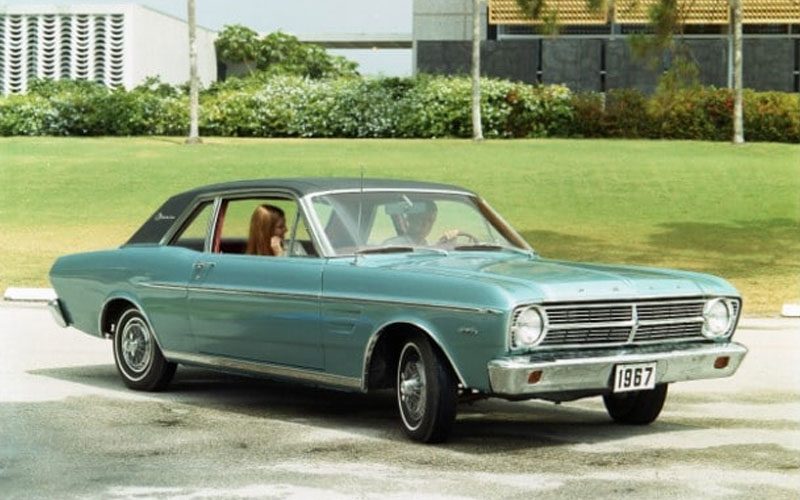
- Before the Ford Mustang became the pony car of the 1960s, the Ford Falcon was introduced as the first compact car released by one of the big three American automakers. The Mustang was based on the Falcon, so this little car had a big impact in that way.
- For a cheap price, car buyers could get a 1960 Falcon as a hardtop, convertible, station wagon, coupe utility pickup, and as a sedan.
- The design was based on cost, so Ford executive Robert McNamara used readily available parts. The second benefit of that method was keeping the weight down so that the car could maintain its compact form.
- With 90 hp under the hood, thanks to a straight-six engine and a three-speed manual or two-speed Ford-O-Matic transmission, the rear-wheel drive car didn’t excel in any one particular area, but it was still successful. In its first year, the Falcon sold over 400,000 models.
- A bucket seat version of the sedan introduced the Futura trim level in 1963. A limited-release 1963 ½ model of the Falcon featured a V8, but not as a sedan. Over the next few years, Ford introduced two more generations of the Falcon, the second generation featuring more of a square shape and the third with more chrome outside and vinyl on the inside.
- As sales of the Falcon declined and safety regulations on the automobile industry were about to be introduced in the 1970s, Ford made the decision to pull the Falcon from its lineup. Although the Futura name popped up on a couple of future Ford vehicles, the Falcon was retired.
Ford LTD 1965-1986
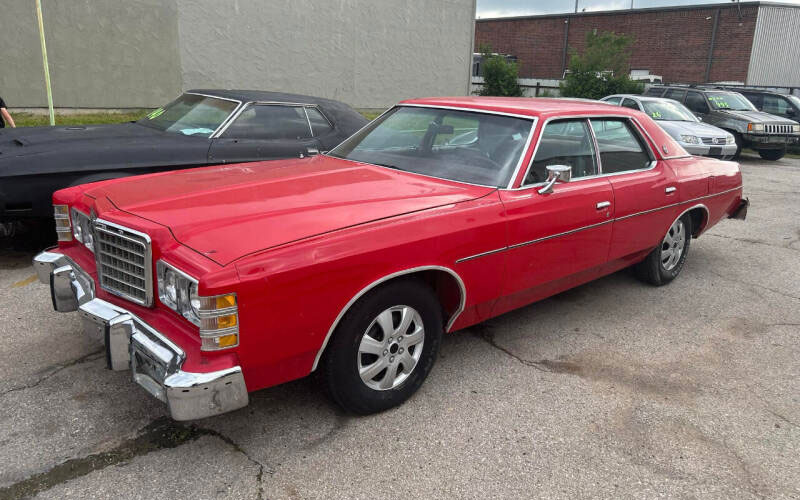
- Initially debuting as the highest trim level of the full-size Ford Galaxie 500 in 1965, the Ford LTD was the largest Ford in North America at the time. It measured 210 inches long, 77.4 inches wide, and had a wheelbase that equaled 119 inches.
- The LTD was available as two-door and four-door hardtop sedan variations. It competed against the likes of the Chevy Caprice and the Mercury Marquis.
- As Ford shifted its lineup, the Galaxie was dropped from the LTD. Other changes during the first generation of the LTD included adding hidden headlights.
- The second generation of the LTD started with major updating. The wheelbase increased by two inches. A split grille was also added (and then discontinued the next year).
- Then came the federal regulations, like five-mile-per-hour front bumpers. This substantially increased the weight of the 1973 LTD.
- After making it through most of the 70s and countless changes, the LTD was given a mid-sized partner, the LTD II. It was meant to compete with the likes of the Chevy Caprice and downsized full-size sedans. The LTD II only lasted for two model years, but it was a testament to how much faith Ford had in the LTD at the time.
- Meanwhile, the third-generation LTD lasted just four model years, starting with the 1979 LTD. Matching automotive trends, the LTD shrunk by 15 inches in body length and seven inches in wheelbase. Trim levels were adjusted to include the LTD Crown Victoria. Fuel economy also improved after some mechanical upgrades.
- The fourth generation of the LTD started with a lot of shuffling around. The LTD essentially became a restyled Granada. This LTD (or Granada) had a sleeker front nose and body styles were limited to a two-door sedan, four-door sedan, or a five-door station wagon.
- Eventually, in the mid-1980s, the auto industry was shifting more towards front-wheel drive cars and mid-size sedans. Ford did, too, ending production of the LTD on December 13, 1985.
- 13 days later, Ford introduced the Taurus as the replacement to the LTD even though Ford sold nearly 429,000 LTD sedans between 1983 and 1986 alone.
Ford Escort 1968-2003
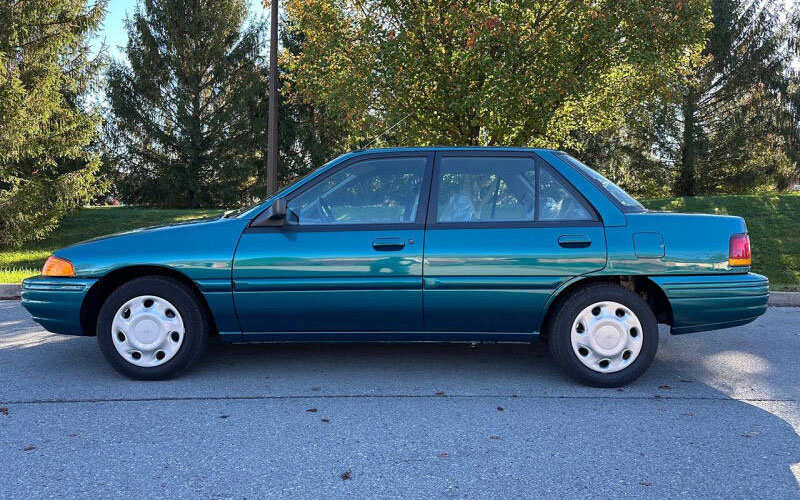
- One of the longest running sedans in Ford’s catalog is the European version of the Ford Escort. The very first Mark I Ford Escort was first introduced in Ireland and the United Kingdom in 1967, eventually appearing at the 1968 Brussels Motor show in January.
- The Escort immediately got attention, becoming a favorite over the likes of the BMC Austin/Morris 1100 and the Ford Cortina. It was especially popular with car buyers in the United Kingdom.
- The second-generation Escort debuted in 1974 and, by that point, Ford had sold over two million Escorts. This generation, which lasted for more than 15 years, underwent several changes whether it was refreshed styling with the blue oval logo on the 1977 Escorts or special editions of the 1979 and 1980 Escorts.
- 1980 marked the third generation of the European version of the Ford Escort and the first generation of the North American version. The two cars didn’t have too many similarities, differing in shape and power but did share the name.
- The third-generation UK Escort became the best-selling car in the country by 1982, overtaking the Ford Cortina. The successful sales continued, making it the best-selling car in the UK for another eight years.
- Meanwhile, in North America, the Escort was the smallest car in Ford’s lineup. Car buyers were buying it up for as low as $1,540 and, by 1982, it became the best-selling car in the U.S.
- The first few years of the U.S. Escort saw minor changes here and there, mostly when it came to exterior styling and badging, but by the mid-80s, this Escort had less chrome, had a smaller grille, and was given a more aerodynamic shape. Still, it claimed the top sales spot again in 1987 and 1988.
- Ford wasn’t about to change what wasn’t broken on the UK Escort so the fourth generation 1986 Escort didn’t see a lot of changes, maintaining the very recognizable boxy styling it had before. The Escort reached its highest sales point in 1989, moving more than 181,200 units.
- Now, the fifth generation 1990 UK Escort came in more rounded, more aerodynamic shapes. European car buyers weren’t as convinced by this version of the Escort, which carried over engines from the previous generation and didn’t really make notable improvements for drivers. Low-quality interior plastics didn’t do Ford any favors with consumers either.
- In the U.S., the Escort had adopted a design from Mazda and introduced a four-door sedan for the ‘92 model. In the UK, Ford tried to fix some of their issues with better steering and suspension, but it kept the same look. Another new look for the sixth-generation ‘95 Escort included an all-new interior. Revised engines were included in this update, too.
- Ford launched a third generation of the U.S. Escort in 1997, continuing to make very subtle exterior changes. Despite the efforts, the Escort gradually became more and more outdated, especially with the launch of the Ford Focus.
- In 1998, Ford began phasing out the Escort in the U.K. and the U.S., but, over the course of six generations, European car buyers purchased more than 4.1 million Ford Escorts alone. The Ford Escort, the European version anyway, is still one of the best selling cars of all time.
Ford Fiesta 1976-2023
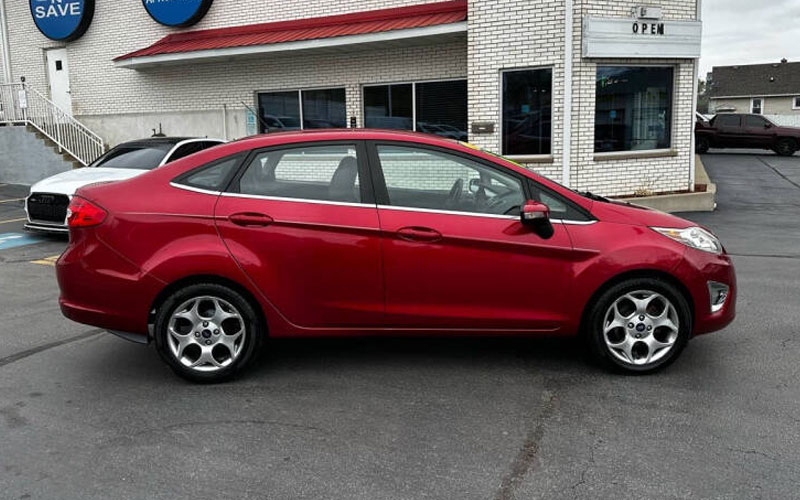
- This is another example of different versions of the same nameplate. The Ford Fiesta was produced in European countries between 1976 and 2023, only making it’s way overseas to North America as a 2011 model. Not counting the Fiesta’s first three models in the U.S. between 1978 and 1980.
- Approved by Henry Ford II in 1972, Ford was looking for a subcompact that could potentially compete against Mini. The 1973 oil crisis only furthered consumer demand for smaller vehicles, so Ford went all in on it, starting with the 1976 Fiesta.
- It was available to European countries with a straight-four engine that had high and low-compression options. In its first year of sales, the Fiesta broke the one-year sales record that was previously held by the ‘65 Mustang.
- The 1979 U.S. version had different trim levels, a more powerful engine, optional air conditioning, energy-absorbing bumpers, and had to meet strict California emission standards.
- The Fiesta was discontinued in the U.S. in 1980, but it wasn’t going to disappear in Europe. Worldwide, Ford sold 1.8 million Fiestas in the first five years alone.
- The 1983 Ford Fiesta started the second generation of the supermini in the U.K. It had a revised front end, minor engine modifications, and a new continuously variable transmission that paired with 1.1-liter models.
- Aftermarket conversions were so popular and done so well that Ford approved installation centers and honored the warranties after the conversions were made.
- Just six years after the second generation, the third-generation 1989 Ford Fiesta was unveiled. This Fiesta was based on a new platform and debuted an all-new look that could compete with rivals in the class.
- Better seats, a longer wheelbase, a heated windshield, and overall better driving dynamics all helped usher in the new Fiesta for customers.
- With the MK3, Ford sold more than one million units in the first two years it was released. The 1995 Ford Fiesta became Britain’s best-selling car in 1996. It stayed there, too, until 1998 when the new Ford Focus claimed that spot. Still, there was no doubt that the fourth-generation Fiesta was a hit.
- The Fiesta received a facelift in 1999, but the next major update came with the fifth-generation 2002 model. Most of the engines in this generation were carried over, but new elements like passenger airbags and an antilock braking system became standard features.
- If the fourth generation sold well, the fifth generation of the UK Fiesta was outstanding. It’s the best selling generation Ford produced.
- As car buyers worldwide were transitioning more and more to mini and compact vehicles, the sixth-generation 2008 Fiesta hit the car lots. This time, it was released under the One Ford strategy, so production on Fiesta models across the globe were more similar than ever.
- This Fiesta was produced in Germany, Spain, China, Thailand, and Mexico. Then, in 2011, Ford finally brought the Fiesta name (in a revised model) to the U.S. again. This Fiesta brought the party with it, offering bright colors, great fuel economy, and a bunch of infotainment in Ford’s Sync system.
- The 2012 Escort in the UK was given a facelift, but a few years later the seventh generation kicked off with the 2017 Escort while the U.S. version was given a few updates year by year. Unfortunately, the Escort was on its last legs in both countries.
- The 2019 Fiesta was the last model available in North America before being discontinued. The model in Europe met the same fate, but the Fiesta lived on in Germany from 2017 to 2023 only as a hatchback.
- By the time the final Ford Fiesta was made in July 2023, Ford had sold more than 22 million units. In terms of sales, it’s only behind the Escort and the F-Series.
Ford Taurus 1986-2019
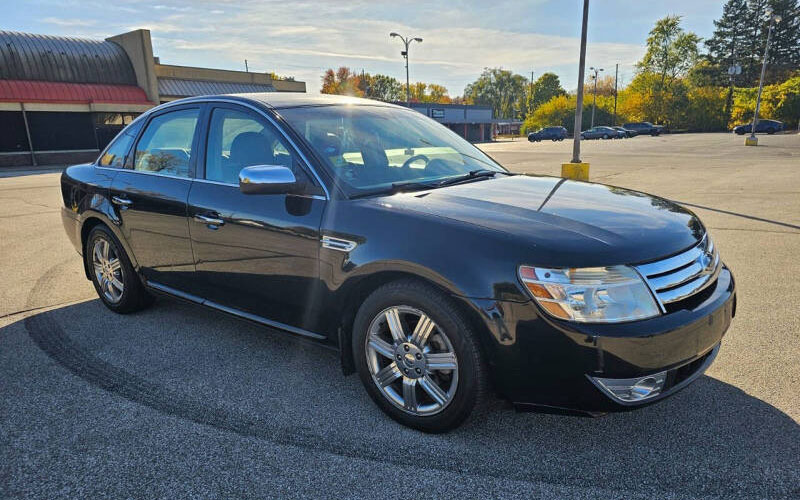
- We told you earlier how the Ford Taurus was replacing the LTD, so the anticipation for the Taurus was high. It had some big shoes to fill. Thankfully for Ford, the Taurus did just that.
- For the Taurus, Ford steered away from the boxy sedans of the past and broke tradition with what became known as a “jelly bean” body style. It combined reliability, efficiency, and spaciousness in one new package.
- In the first six years of its existence, the Taurus won several awards and Ford produced more than 2 million first-generation Taurus models.
- The second-generation ‘92 Taurus saw no changes under the hood, but it did have a more rounded look to it. It was also a little longer and slightly heavier than the first generation.
- An automatic braking system and four-wheel disk brakes were added throughout the second generation, but it was the third-generation 1996 model that featured a heavily upgraded chassis. Sharing underpinnings with the Lincoln Continental, Ford Windstar, and Mercury Sable, this Taurus didn’t click as much with car buyers.
- Ford continued making small improvements, like simplifying the radio switches.
- The 1998 Taurus was introduced into NASCAR as the first four-door sedan approved for the association. The Winston Cup was won with a Ford Taurus with Dale Jarrett behind the wheel of the No. 88 car.
- The end was already drawing near for the Taurus by the time the 2000 model started off the fourth generation of the sedan. Sales continued to decline, despite Ford making changes and trying to figure out what the public wanted.
- This Taurus was less of an oval shape, had more trunk space, and had more interior room. Ford bumped up the output to 155 hp and added side-impact airbags (one of the first cars to do so), but the Honda Accord and Toyota Camry were still too dominant at the time.
- After the Taurus was removed from Ford’s lineup in October 2006, it continued on in the States exclusively for fleet services. The discontinuation didn’t last long, however, because the Taurus was revived in 2008. It had a different drivetrain and was basically a rebadged Ford 500, but the name was back.
- Then came the “new” Ford Taurus with a 2010 redesign. It was still built using the 500’s chassis and was now Ford’s largest sedan, replacing the Crown Victoria. The new Taurus Police Interceptor was a g-to choice for law enforcement agencies in the U.S.
- The Taurus had some strong points, like all-wheel drive, a cross traffic alert, blind spot monitoring, and other driver assist features, but it also faced some criticism due to a lack of sight lines, a lack of interior space, and driving manners that just didn’t hold upt othe likes the Honda Accord and Toyota Camry.
- A 2013 Taurus was revealed with a facelift. It had a new front fascia, updated LED taillights, and new wheels. In addition to that, it delivered best-in-class fuel economy with 22 mpg in the city and 32 mpg on the highway.
- A seventh-generation 2016 Taurus was introduced in China, but not in the U.S. Instead, in April 2018, Ford announced plans to discontinue not only the Taurus but the Fiesta, Focus, and Fusion, too. It was all part of a money-saving effort to concentrate on trucks and SUVs.
- When Ford finally stopped production of the Taurus in 2019, it had reached nearly eight million sales. Not only was the Taurus one of the most popular Ford sedans ever, it was one of the most popular Ford vehicles ever.
- The Taurus didn’t actually end there, though, at least not worldwide. It was used a while longer in Middle Eastern and Asian countries under the Ford Mondeo name.
Ford Crown Victoria 1992-2012
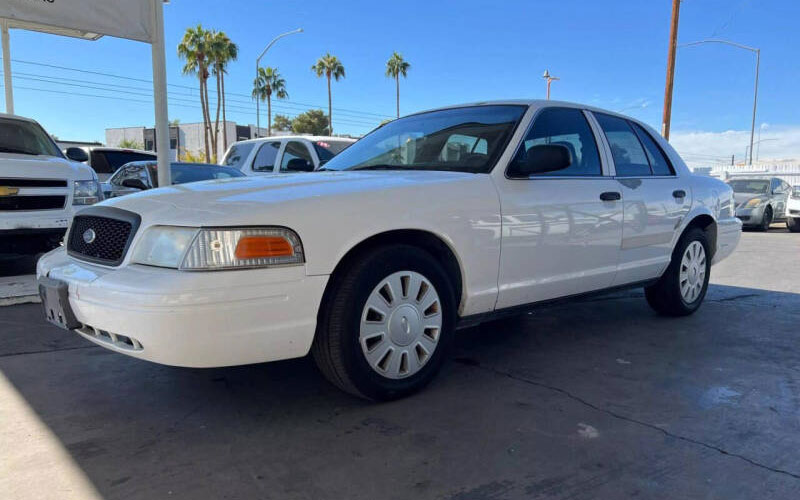
- This sedan has a shortler lifespan than some others on this list, but the Crown Vic name was used back in the 1950s on the Fairlane and in 1970s as well, as a Ford LTD Crown Victoria. The 1992 Crown Victoria was the first time the vehicle was a full-size sedan on its own.
- The Crown Victoria ended up being the largest Ford sedan available. While the Crown Victoria Police Interceptor was marketed to law enforcement, the regular Crown Vic was used by average drivers and as part of taxi cab fleets. While these large vehicles would’ve normally been hit with taxes for fuel consumption, they were made in Canada, so, technically, they were imports.
- The initial Crown Victoria had the Ford Panther platform of the LTD Crown Victoria. It hit 136,949 in the first year of sales. That was the highest point of the first generation, though, so sales dipped from there.
- The next few years came with a handful of updates, like standard passenger-side airbags, a shadow grille, and some new door panels, but nothing too significant.
- The second-generation Crown Victoria took on more of the look of the better-selling Mercury Grand Marquis. Inside were some expected dashboard and gauge updates. Mechanically, the ‘98 Crown Victoria put out 15 extra hp compared to the first generation.
- That output increased to 220 hp and 235 hp on 2001 dual exhaust models, too, thanks to new cylinder heads on the 4.6-liter V8.
- An extensive redesign occurred in 2003. Almost the entire chassis was redesigned for improved steering and suspension. The 4.6L V8 also received some fine tuning. After the revisions, 2003 dual exhaust models were now making 224 hp and 239 hp.
- However, Ford enacted a series of cost-cutting measures to all Panther platform vehicles. By eliminating body-colored mirror caps, an automatic parking brake release, front seat bottom pouches, and other elements, Ford saved $4 million.
- 2006 wasn’t a good year for the Crown Victoria. Sales dropped to 3,000 units. The Crown Victoria Police Interceptor models were still being used by police departments nationwide, but normal Crown Victoria sedans weren’t cutting it. That’s why Ford ended retail sale of the Crown Victoria in 2008.
- Fleet sales continued on for taxis and police vehicles through 2011.
Ford Mondeo 1993-2022
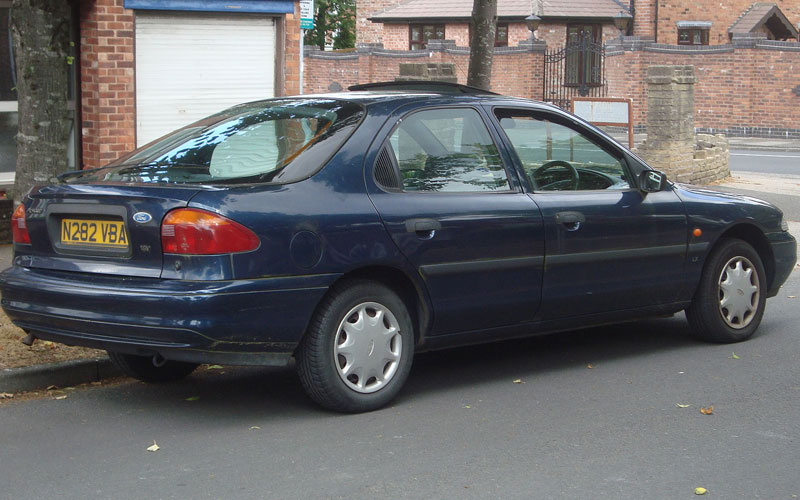
- Known as the Ford Contour (which was a rebadged Mercury Mystique variant), the Ford Fusion, and the Ford Taurus in different areas of the world, the Mondeo is a vehicle that’s been in production since 1993.
- It was marketed as a “world car,” or a car with a platform that suits the needs of every market around the globe. Mondeo is derived from the Latin word mundus, which translates to “world.”
- Throughout its entire run, the Contour received high marks from car reviewers for both handling and ride quality, earning a spot on several “Beset Of” lists. Sales figures, however, didn’t match the reaction of the reviewers. Customers opted for the larger Ford Taurus or the less expensive Ford Escort. Even though Ford sold 134,000 units in 1999, the Contour was discontinued.
- In contrast, the Mondeo was an instant hit in Europe. The vehicle received several awards there throughout the mid-90s. In 1999, the Mondeo eventually fell to sixth place in the saloon class.
- Available as a liftback, estate, and a sedan, the Mondeo was positioned as a mid-size or full-size car, depending on which generation you look at.
- The second generation of the Mondeo grew larger but was still on the CDW27 platform from the first generation. The third-generation 2006 Mondeo was based on a EUCD platform that Ford developed with Volvo.
- For the fourth generation of the Mondeo, it was reintroduced in America as the Ford Fusion, which you can read about below.
- A fifth generation of the vehicle started with the 2022 Mondeo in China, but it wasn’t marketed in Europe or North America. In the Middle East, the fifth-generation Mondeo is known as the Ford Taurus.
Ford Fusion 2006-2020
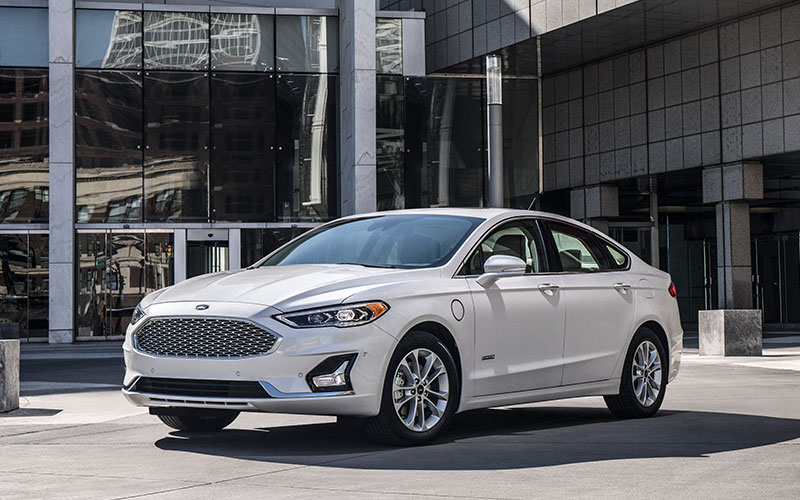
- Made at a Ford plant in Mexico, the Ford Fusion replaced the Mondeo in Latin American markets.
- The first-generation 2006 Ford Fusion was available in S, SE, and SEL trims. The vehicle was the first to introduce a new three-bar grille with the Ford logo in the center of it.
- During the first generation of the Fusion, which lasted through the 2012 model year, several Duratec engine options were available, including 2.3-liter, 2.5-liter, 3.0-liter, and 3.5-liter gasoline engines. With a six-speed automatic transmission, the first-generation Fusions made between 160 and 221 hp.
- In NASCAR, the Fusion replaced the Taurus as the new body style.
- A 2.5-liter hybrid engine was made available to U.S. buyers in March 2009. It earned better fuel economy than the Toyota Camry Hybrid, Nissan Altima Hybrid, or the Chevy Malibu Hybrid.
- The second-generation 2013 Fusion was built on the Ford CD4 platform. It was an example of a “One-Ford” initiative which included bringing global Ford employees together and building cars and trucks that people wanted. The cost-cutting strategy ended up saving Ford millions of dollars at a time when the automotive industry was struggling a bit.
- It was during this second generation of the Fusion that Ford introduced several driver assistance features like lane-keeping assist, adaptive cruise control, a forward collision warning, and blind spot monitoring. Along with that, the Fusion was given a backup camera and rear cross-traffic alert.
- The hybrid version of the Fusion was updated for the 2013 model year along with a plug-in hybrid version. It was the first Ford with combustion engines, hybrid engines, and plug-in hybrids. One of the changes Ford implemented was using lithium-ion batteries instead of nickel-metal hydride batteries.
- The Fusion, badged as the Ford Mondeo, was introduced to the European and Latin American markets in 2014.
- A few years later, for the 2017 Fusion, Ford gave the vehicle a little facelift. Two new trim levels (the Sport and the Platinum), new front and rear styling, and a new rotary-controlled transmission were all part of that update.
- Of course, more updated technology paved the way for even more features, this time under Ford’s SYNC 3 infotainment system. In 2017, Android Auto and Apple CarPlay compatibility were a big part of that. As we pointed out in our Best Car Infotainment System of 2023 comparison, Ford infotainment has come a long way since then.
- Ford begin discontinuing the Fusion (and all other sedans in North America) in 2018. Despite some good reviews of the Fusion over the years, sales only hit around 110,700 units in 2019. Ford was also simultaneously focusing on better-selling body styles like SUVs and trucks.
- The last U.S. Fusion was the 2020 model, the last one rolling off the assembly line on in July 2020. The Fusion continued on for two more years in Europe and Latin America, but Ford wrapped in production there, too, in 2022 and, with that, it was the last of the Ford sedans.


